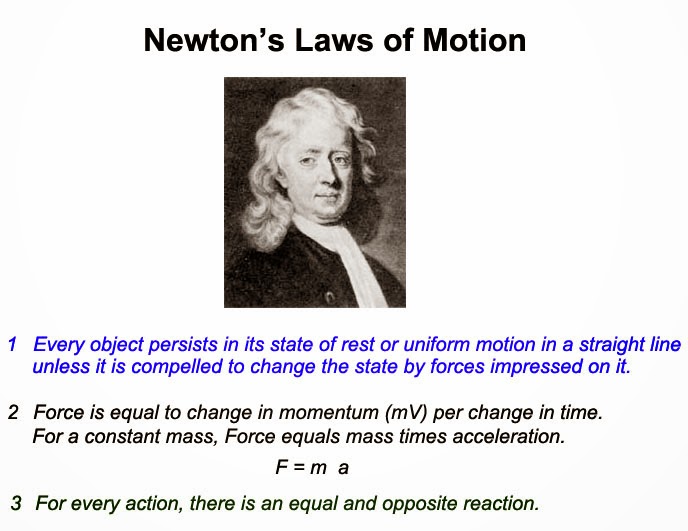
Newton’s First Law of Motion :
Newton’s first law of motion states that every object will remain at rest or in uniform motion in a straight line unless compelled to its state by the action of an external force.
The first law of motion is normally taken as the definition of inertia. If there is no net force acting on an object then object will remain a constant velocity. If an external force is applied, the velocity of body will change because of force.
Newton’s Second law of Motion :
Newton’s Second law of motion states that if the resultant force acting on a particle is not zero, the particle will have acceleration proportional to the magnitude of the resultant and in the direction of this resultant force. This law explains how velocity of an object changes when it is subjected to an external force. The law defines force to be equal to change in momentum (mass times velocity) per unit time.
For an object with constant mass m, Newton’s second law of motion states that the force 'F' is the product of an object’s mass 'm' and its acceleration 'a'.
F = m.a
For an externally applied force, the acceleration depends on mass of the object and a change in velocity will generate a force. The above equation works in both ways.
Newton’s Third Law of Motion :
Newton’s third law of motion states that for every action (force) in nature there is an equal and opposite reaction. In other words, if object 'A' exerts a force on object 'B', then object 'B' also exerts an equal force on object 'A'.
The third law of motion can be used to explain the generation of lift by a wing and the production of thrust by a jet engine.
No comments:
Post a Comment